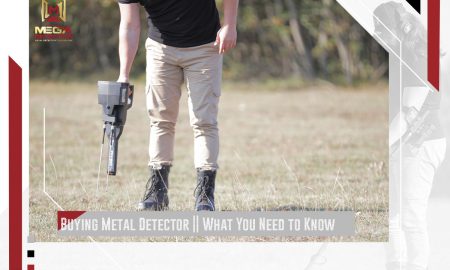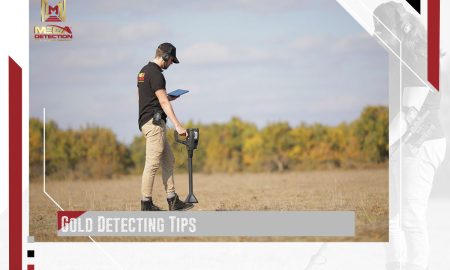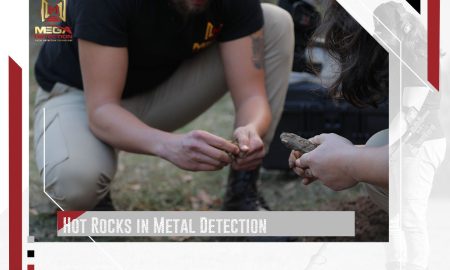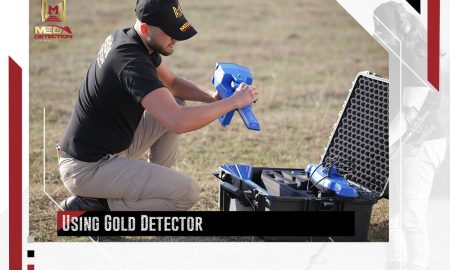Best Metal Detector for Beginners
Best Metal Detector for Beginners
Walk through online stores and you’ll find plenty of “metal detectors” aimed at beginners . These models are cheap and readily available – so why look anywhere else?
The problem is that these detectors are effectively just toys. You’ll be lucky to get any signal unless the object is on the surface. And even when you hit a target, it’s likely to be junk such as a pull tab.
Fortunately, there are some excellent models that provide professional-standard performance for a much lower cost than premium models.
While Best Metal Detector for Beginners often lack advanced features and settings, the best options still provide features such as visual target ID, depth indicators and notch discrimination. Most importantly, they can detect coins, jewelry and relics at a reasonable depth (up 6”-8” depending on the ground conditions).
It’s important to understand there’s no “best” detector for all situations.Instead, you need to choose a detector that matches your experience, budget, local area and desired targets. Here’s a quick guide to choosing your first machine.
Your Hunting Grounds
There are two key factors to consider when choosing the Best Metal Detector for Beginners :where you’re going to hunt and what type of target you’re hunting.
Let’s start with the second question: what do you want to find?
What they can’t do is hunt for gold nuggets and flakes. Beginner detectors will pick out a gold bracelet at a park, but they don’t have the features required for gold prospecting.
For that, you’ll need to spend more money on a strong model . And even those machines can’t match the gold hunting performance of expensive gold detectors such as the Gold Star 3D Scanner.
But as long as you’re not planning to hunt for gold, you don’t need to splash out on a gold detector. Instead, one of the beginner models is a better choice.
Now what about the second question: where are you going to hunt?
The level of ground mineralization varies depending on where you live. The higher the mineralization, the more “falsing” and “chatter” you’ll get from a detector. You’ll need to lower the sensitivity of the machine to counteract this, which reduces depth.
Premium detectors have both automatic and manual ground balance adjustment, which allows them to “ignore” mineralization while maintaining decent depth.
But the average entry-level model is likely to struggle with high mineralization, as they often only have pre-set ground balance. This is calibrated to the average ground conditions, not for highly mineralized soil, and can’t be adjusted.
So, if you happen to live in regions with high iron concentration, or if you’re going to be hunting on wet sand (which causes similar issues), be prepared to spend more on a detector designed to handle these ground conditions.
Another consideration is whether you want to hunt underwater. Nearly all detectors have waterproof coils, but the control box is often not waterproof.
This means you can use the detector in shallow freshwater locations, such as the edge of creeks or rivers, as long as the control box stays dry.
I don’t usually recommend this though. All it takes is one slip and your detector will be ruined. So, if you’re planning on hunting in water, look for a submersible detector.
Key Features and Terminology
The world of metal detecting can be a confusing place for beginners. With endless terminology, not to mention a huge range of models and features, it can be hard to know where to start.
You don’t need an in-depth knowledge of metal detecting just to buy your first detector though. Here are the main features to look for:
Operating Frequency. This is simply the speed at which the machine oscillates to create a magnetic field. People often think that a higher frequency is “better,” but this isn’t always true. While higher frequencies are more sensitive to small items, lower frequencies provide greater depth. Most beginner detectors have a frequency in the range of 5-10 kHz which is perfectly adequate for general-purpose hunting.
Weight. The weight of a detector is a vital factor – yet it’s often overlooked by beginners. The lighter a detector, the longer you can swing it without getting fatigued.
Discrimination and Notch Discrimination. There’s nothing more frustrating than digging up your tenth pull-tab or bottle cap without a single real find! For this reason, professional detectors can discriminate or ignore targets depending on the type of metal. This is achieved by setting a threshold conductivity and ignoring anything below this level. Detectors with notch discrimination allow you to “notch out” conductivity levels, rather than remove everything below a certain threshold.
Depth Indicator. Many modern detectors have a basic coin depth indicator. This provides a quick estimate of how deep your plug needs to be, although the accuracy can vary greatly.
Ground Balance. As I mentioned earlier, ground balance can reduce chatter and increase detection depth in mineralized locations. Most beginner detectors come with “pre-set” ground balance, which is based on average ground conditions. This is fine for low or medium mineralization, but not for “hot” ground. More advanced detectors come with automatic ground balance, which allows the detector to adjust according to the current conditions. If you’re going to be hunting in areas with high levels of mineralization or in wet sand, you’ll need either manual or automatic ground balance.
Target Identification. Target ID provides a gauge as to how your detector responds to different types of target, so you can predict an item before you dig. The most basic metal detectors show a “signal strength” which is a crude measure of the size and conductivity of an object. Others show categories of target ID, which gives a rough idea of metal type. More advanced detectors have numerical target ID, which is a number between 0-99 depending on the target conductivity. This provides more precise identification.
Search Coil. The stock search coil of a detector should be suitable for basic detecting. As you get more advanced, there are often additional search coils available with a variety of sizes and technology. Big coils are great for depth and covering large areas of ground, but smaller coils provide better target separation and greater manoeuvrability.
It’s a common misconception that only expensive metal detectors can hunt gold, silver or other types of valuable metal.
This isn’t true. All “real” metal detectors can find any metallic object, including silver, tin, aluminum, lead, bronze and nickel.
With that said, a beginner detector is aimed at people who want to hunt coins, relics and jewelry. These items are often found at depths up to 6”-8” in parks, woodland, fields and dry sand.
While Best Metal Detector for Beginners can find gold, they aren’t suitable for the tough ground conditions where nuggets are often found.
The operating frequency of a detector can also affect what it’s likely to find.
Lower frequencies provide greater depth but at the cost of sensitivity to small objects. This is useful for hunting relics, but can be a hindrance when trying to find jewelry. Higher operating frequencies provide greater sensitivity to small objects but less ground penetration.












Leave a Reply